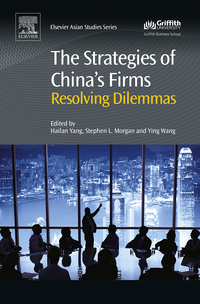Question
2- Assume that expected returns and standard deviations for all securities (including the risk-free rate for borrowing and lending) are known. In this case all
2- Assume that expected returns and standard deviations for all securities (including the risk-free rate for borrowing and lending) are known. In this case all investors will have the same optimal risky portfolio. (True or false?) (0.5 Point) 3- The standard deviation of the portfolio is always equal to the weighted average of the standard deviations of the assets in the portfolio. (True or false?) (0.5 Point) 4- The following data apply to Problems 4.a through 4.g: A pension fund manager is considering three mutual funds. The first is a stock fund, the second is a long-term government and corporate bond fund, and the third is a T-bill money market fund that yields a rate of 8%. The probability distribution of the risky funds is as follows: (3 Points) Expected Return Standard Deviation Stock fund (S) 20% 30% Bond fund (B) 12 15 The correlation between the fund returns is .10. a. What are the investment proportions in the minimum-variance portfolio of the two risky funds, and what is the expected value and standard deviation of its rate of return? b. Tabulate and draw the investment opportunity set of the two risky funds. Use investment proportions for the stock fund of zero to 100% in increments of 20%. c. Draw a tangent from the risk-free rate to the opportunity set. What does your graph show for the expected return and standard deviation of the optimal portfolio? d. Solve numerically for the proportions of each asset and for the expected return and standard deviation of the optimal risky portfolio. e. What is the Sharpe ratio of the best feasible CAL? f. You require that your portfolio yield an expected return of 14%, and that it be efficient, on the best feasible CAL. f.1. What is the standard deviation of your portfolio? f.2. What is the proportion invested in the T-bill fund and each of the two risky funds? g. If you were to use only the two risky funds, and still require an expected return of 14%, what would be the investment proportions of your portfolio? Compare its standard deviation to that of the optimized portfolio in Problem f. What do you conclude? 5- Suppose that there are many stocks in the security market and that the characteristics of stocks A and B are given as follows: (1 Point) Stock Expected Return Standard Deviation A 10% 5% B 15 10 Correlation = - 1 Suppose that it is possible to borrow at the risk-free rate, rf. What must be the value of the risk-free rate? (Hint: Think about constructing a risk-free portfolio from stocks A and B.)
6- Suppose that you have $1 million and the following two opportunities from which to construct a portfolio: (1 Points) a. Risk-free asset earning 12% per year. b. Risky asset with expected return of 30% per year and standard deviation of 40%. If you construct a portfolio with a standard deviation of 30%, what is its expected rate of return? The following data are for Problems 7, 7.A. and 7.B.: The correlation coefficients between pairs of stocks are as follows: Corr(A, B)= .85; Corr(A, C)=.60; Corr(A, D)=.45. Each stock has an expected return of 8% and a standard deviation of 20%. 7- If your entire portfolio is now composed of stock A and you can add some of only one stock to your portfolio, would you choose (explain your choice): (1 Point) 1. B. 3. D. 2. C. 4. Need more data. A. Would the answer to Problem 7 change for more risk-averse or risk-tolerant investors? Explain. B. Suppose that in addition to investing in one more stock you can invest in T-bills as well. Would you change your answers to Problems 7 and 7.A. if the T-bill rate is 8%? 8- Stocks offer an expected rate of return of 18%, with a standard deviation of 22%. Gold offers an expected return of 10% with a standard deviation of 30%. (2 Point) a. In light of the apparent inferiority of gold with respect to both mean return and volatility, would anyone hold gold? If so, demonstrate graphically why one would do so. b. Given the data above, re-answer (a) with the additional assumption that the correlation coefficient between gold and stocks equals 1. Draw a graph illustrating why one would or would not hold gold in ones portfolio. Could this set of assumptions for expected returns, standard deviations, and correlation represent an equilibrium for the security market?
Step by Step Solution
There are 3 Steps involved in it
Step: 1

Get Instant Access to Expert-Tailored Solutions
See step-by-step solutions with expert insights and AI powered tools for academic success
Step: 2

Step: 3

Ace Your Homework with AI
Get the answers you need in no time with our AI-driven, step-by-step assistance
Get Started


